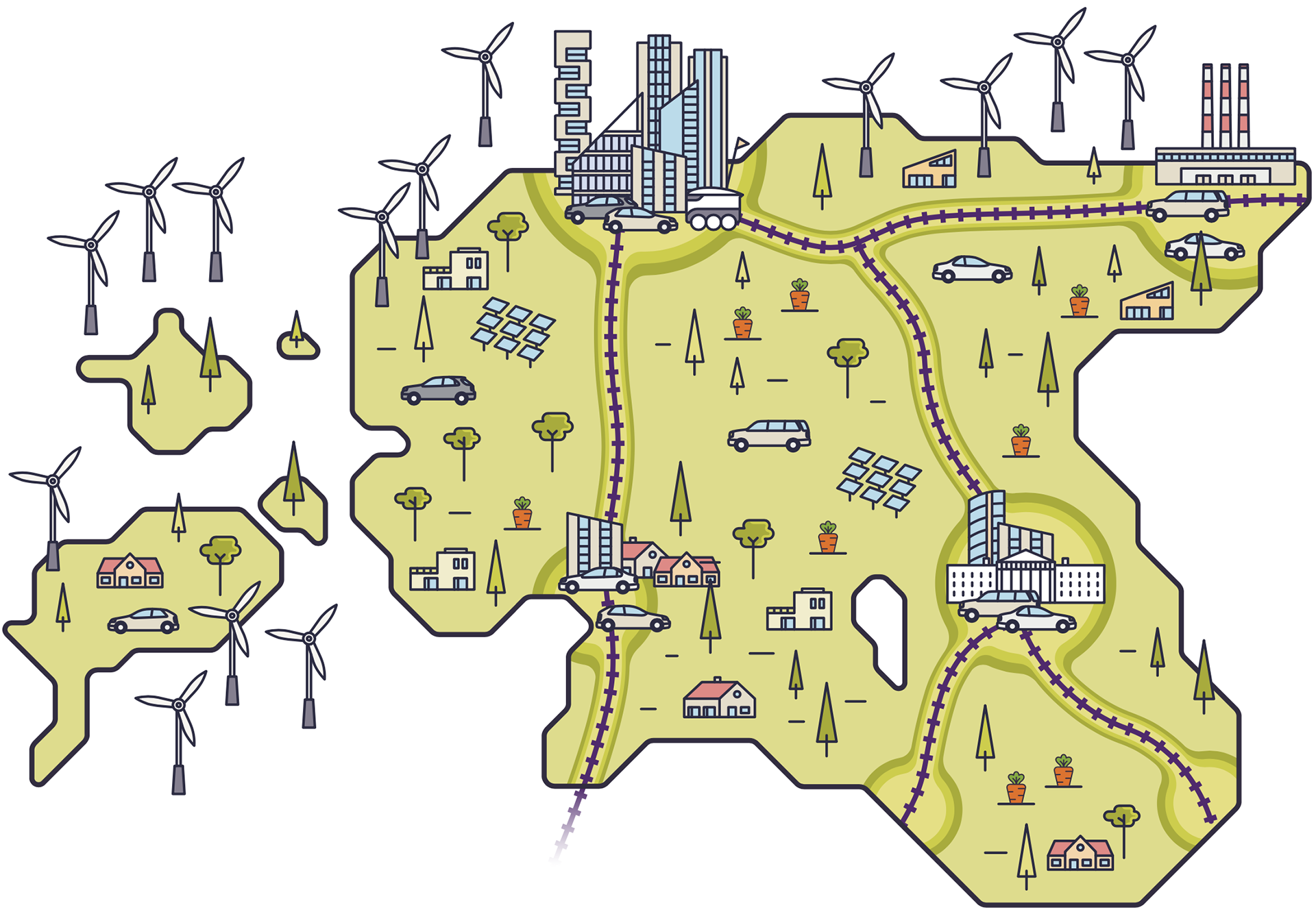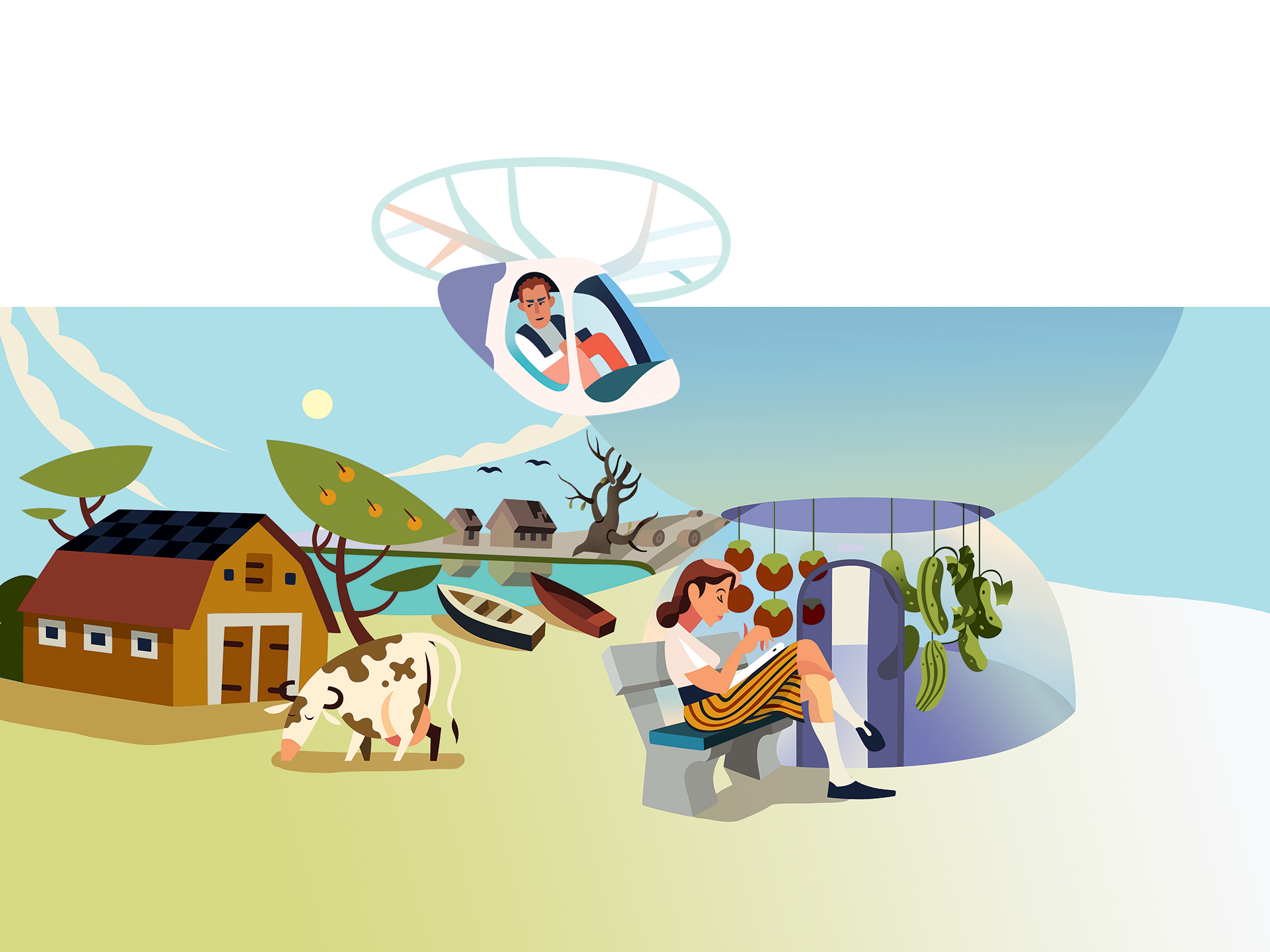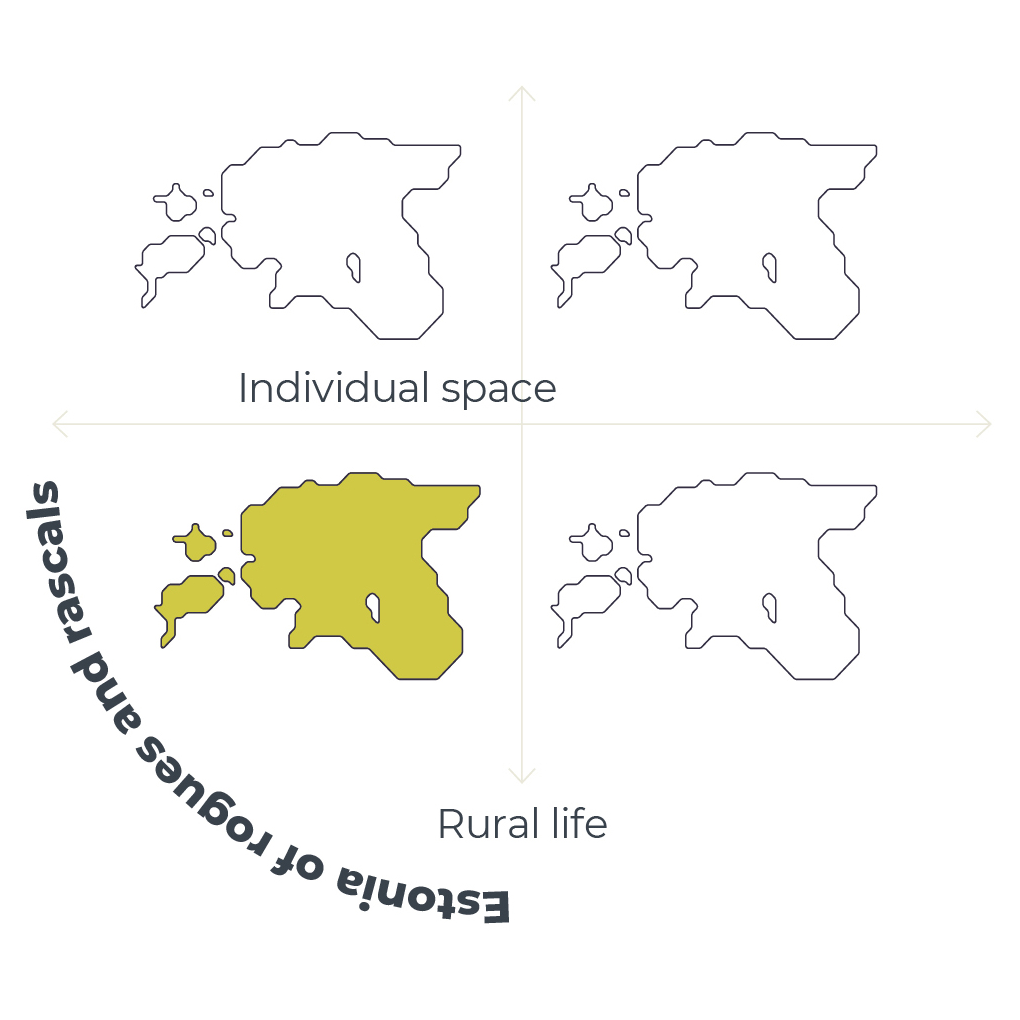Estonia of rogues and rascals

| Urban population: | 70% |
| Wealth disparity: | high |
| Spatial inequality: | very high |
| Good public space: | privileged, shared or non-existent, according to the capacity of local governments |
| Data: | concentrated in the hands of large corporations; cybercrime is rampant |
| Society’s expenditure on basic infrastructure: | high and unequally distributed |
| Socio-economic efficiency: | very low |
| Sustainable development goals: | some of the smaller municipalities have met the goals; the overall picture is poor |
There are various large and smaller centres in Estonia, the more capable of which are trying to find their own face – some attract attention by offering high-tech solutions, others attract more and more older people who are engaged in digitised agricultural production. At the same time, there are also quite a few backward areas where the main employer has gone bankrupt and help is nowhere to be found. Only wind turbines and solar panels owned by large corporations stand out in these areas, while the specialists that operate these are not from the local population. New immigrants are spread across the country, especially in smaller places that offer very low-paid jobs that locals themselves do not want or are unable to do, while ageing settlements especially need help from social workers. The situation with addiction disorders and HIV is very poor and these illnesses are considered to be the fault of those affected. Many wealthier people live scattered across the country, as the climate crisis has ruined their appetite for living in the cities: it is popular to say that a true Estonian still lives in a house with their own garden and field. The communal approach is practised by ‘hippies’, but a ‘decent’ person still strives to be better than their neighbour. Due to the scattered population, the quality of public space is fairly poor, and investments are more likely directed to roads. These are of varying quality, and it has been learned from the failure of ambitious infrastructure projects in the past that there is no point in trying too hard. There are various providers of self-driving cars and transport drones, so a good service is available for the more affluent, while the poorer people have to make do with whatever they can – and quite often they cannot. On the happiness index, Estonia is a mediocre laggard.

